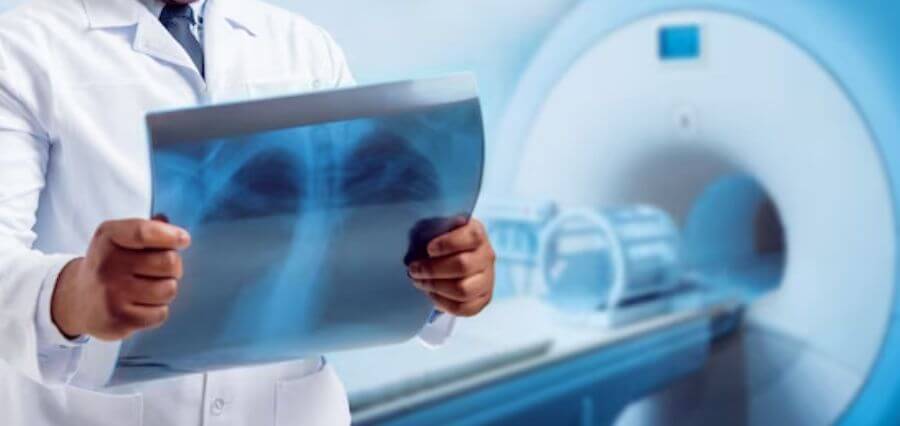Advancing Trends and Technologies
In modern medicine, diagnostic imaging is a cornerstone of accurate and timely disease detection. Over the years, this field has undergone remarkable advancements, revolutionizing how healthcare professionals visualize and comprehend the human body’s intricate inner workings. As we venture into the 21st century, the landscape of diagnostic imaging is poised for even more transformative changes, driven by groundbreaking trends and technologies that promise to enhance precision, accessibility, and patient outcomes.
Let’s dig deeper into unveiling a new era in medical diagnosis!
The Evolution of Diagnostic Imaging
Before delving into the exciting prospects on the horizon, it’s crucial to appreciate the evolutionary journey that diagnostic imaging has taken. From the humble beginnings of X-rays in the late 19th century to the emergence of magnetic resonance (MRI), computed tomography (CT) scans, and ultrasound, each milestone has propelled medical imaging towards greater accuracy and diagnostic power. These innovations have played a pivotal role in enabling early disease detection, guiding treatment decisions, and reducing the need for invasive procedures.
Artificial Intelligence (AI) and Machine Learning
The convergence of diagnostic imaging and artificial intelligence (AI) is perhaps the most compelling trend shaping the future of medical diagnosis. AI algorithms are poised to amplify the capabilities of radiologists and clinicians by streamlining image analysis, enhancing pattern recognition, and expediting the interpretation of complex data. By training on vast datasets, AI-driven systems can spot minute abnormalities that might escape even the most keen-eyed human observer. As a result, AI accelerates the diagnostic process and contributes to more accurate and consistent diagnoses.
Precision Medicine and Personalized Imaging
One-size-fits-all approaches to medicine are becoming a thing of the past, thanks to the rise of precision medicine. Diagnostic imaging is at the forefront of this revolution, as it allows for the tailored assessment of an individual’s unique anatomy and pathology. With genomics and molecular imaging advancements, doctors can identify genetic markers, predict disease susceptibility, and tailor treatment plans accordingly. This personalized approach increases treatment efficacy and minimizes adverse effects, underscoring the transformative potential of diagnostic imaging in the era of precision medicine.
Multi-Modal Imaging
The future of diagnostic imaging is not limited to a single modality. Rather, it lies in integrating multiple imaging techniques to provide a holistic view of a patient’s condition. Combining data from various sources, such as MRI, CT scans, positron emission tomography (PET), and functional MRI, yields a comprehensive understanding of the body’s structural and functional aspects. This synergistic approach empowers clinicians to unearth insights that might remain hidden when using individual imaging methods alone, enhancing diagnostic accuracy and improving patient care.
Advancements in Imaging Equipment
Cutting-edge technology is breathing new life into diagnostic imaging equipment. The evolution of equipment, driven by innovations in hardware and software, is boosting the quality of images, reducing radiation exposure, and shortening scan times. For instance, the development of ultra-high-field MRI systems offers unprecedented clarity and resolution, enabling the visualization of smaller anatomical structures and subtle abnormalities. Similarly, advancements in portable ultrasound devices are expanding access to quality diagnostic imaging in remote or underserved regions, transcending traditional boundaries and democratizing healthcare.
The Promise of Hybrid Imaging
Hybrid imaging, the fusion of two or more imaging modalities into a single system, opens doors to unparalleled diagnostic capabilities. One notable example is positron emission tomography-computed tomography (PET-CT), which marries the functional information provided by PET with the detailed anatomical images from CT scans. This integration not only aids in pinpointing disease locations but also offers insights into disease metabolism and progression. As hybrid imaging technologies evolve, they hold immense potential for revolutionizing cancer diagnosis, neuroimaging, and cardiovascular assessment.
Virtual and Augmented Reality
The advent of VR and AR is poised to redefine how medical professionals interact with diagnostic images. By immersing themselves in a 3D virtual environment, clinicians can explore intricate anatomical structures and study pathology from different angles, enhancing their understanding and decision-making. AR overlays real-time images onto a surgeon’s field of view, enabling real-time guidance during procedures. This fusion of imaging and immersive technology enhances medical students’ educational experience and elevates surgical precision and patient outcomes.
Ethical and Legal Considerations
With the rapid pace of technological progress in diagnostic imaging, it’s imperative to address the ethical and legal implications that arise. AI, for instance, prompts discussions about data privacy, algorithm transparency, and the potential for bias in machine learning models. Striking a balance between innovation and responsible implementation is paramount to ensuring patient safety, maintaining trust, and upholding medical standards in this evolving landscape.
Conclusion
As we stand on the threshold of a new era in diagnostic imaging, the possibilities are exhilarating. The convergence of AI, personalized medicine, multi-modal imaging, and immersive technologies promises to propel healthcare into uncharted territory. With responsible stewardship of these advancements, the future of diagnostic imaging can reshape the healthcare landscape.















